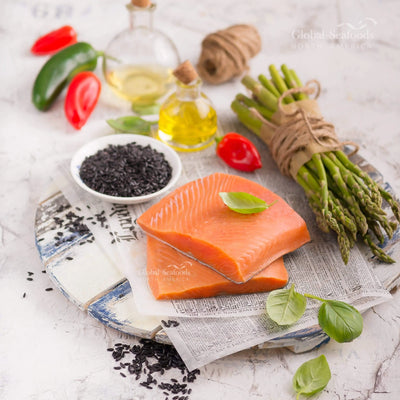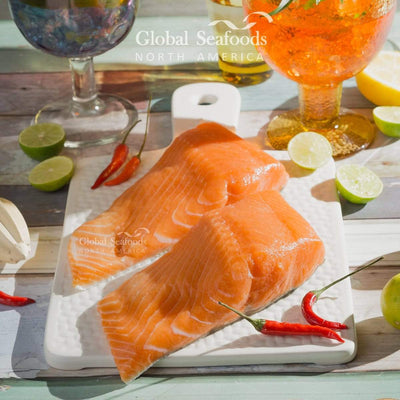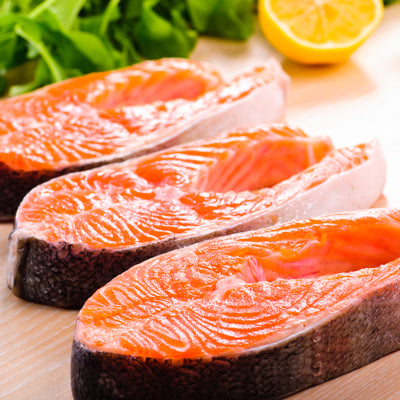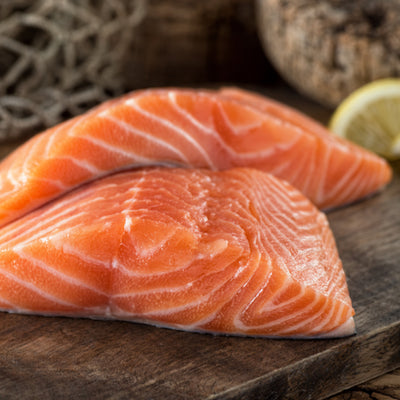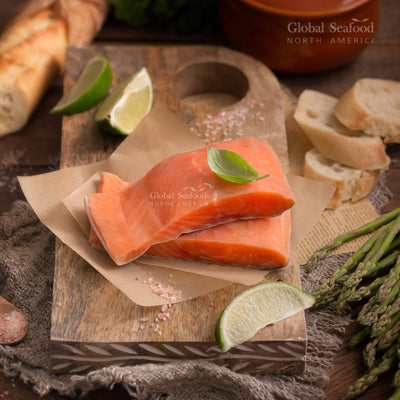Red Salmon Delicacy: Health Benefits, Recipes & Expert Cooking Tips

Red Salmon Delicacy: A Nutritional Powerhouse and Culinary Delight
Red salmon, also known as sockeye salmon, is a prized seafood delicacy cherished for its vibrant red flesh and rich, bold flavor. Whether grilled, baked, or pan-seared, this nutritious fish offers a wealth of health benefits and culinary versatility.
In this guide, we’ll cover:
✅ Nutritional benefits of red salmon
✅ Expert cooking techniques for the best results
✅ Delicious red salmon recipes to try at home
✅ Where to buy premium-quality red salmon online
For seafood lovers and health-conscious eaters alike, this guide is a must-read!
Health Benefits of Red Salmon
1. Rich in Omega-3 Fatty Acids
Red salmon is a powerhouse of omega-3 fatty acids, which provide:
✔️ Heart health benefits – Lowers cholesterol and reduces blood pressure
✔️ Anti-inflammatory properties – Helps alleviate arthritis and joint pain
✔️ Cognitive support – Enhances memory, focus, and brain function
A 3.5-ounce serving of red salmon delivers over 1,000 mg of omega-3s, making it one of the best natural sources of these essential fats.
🔗 Learn more about omega-3 benefits
2. Excellent Source of High-Quality Protein
Red salmon is an exceptional source of complete protein, containing all nine essential amino acids.
- A 3-ounce serving provides approximately 22 grams of protein
- Supports muscle recovery and strength building
- Keeps you full longer, aiding in weight management
🔗 Shop premium sockeye salmon fillets here
3. Packed with Essential Vitamins and Minerals
This fish is nutrient-dense, offering:
✔️ Vitamin D – Crucial for bone health and immune support
✔️ Vitamin B12 – Supports nerve function and energy production
✔️ Selenium – Aids in thyroid function and protects against oxidative stress
✔️ Potassium – Helps regulate blood pressure and muscle contractions
🔗 Discover the benefits of wild-caught king salmon
How to Select and Store Red Salmon
1. Choosing Fresh Red Salmon
When buying red salmon, look for:
- Deep red flesh – Avoid dull or discolored fillets
- Firm texture – Fresh fish should spring back when touched
- Mild oceanic scent – It should not have a strong fishy odor
🔗 Order premium coho salmon fillets online
2. Best Way to Store Red Salmon
Proper storage is essential to maintain freshness:
- Refrigerate fresh salmon at 40°F (4°C) or below and consume within two days
- Freeze for long-term storage, wrapped in plastic or vacuum-sealed
- Thaw overnight in the refrigerator for the best texture
🔗 Try delicious salmon belly strips
Expert Cooking Tips for Perfect Red Salmon
1. Best Seasoning and Marinades
Enhance red salmon’s natural flavor with:
- Lemon, garlic, and dill for a fresh, bright taste
- Olive oil, soy sauce, and honey for a rich, savory glaze
- Paprika, chili powder, and cayenne for a spicy kick
🔗 Shop fresh chum salmon fillets
2. Best Cooking Methods
a) Grilling
- Preheat the grill to medium-high heat
- Place salmon skin-side down and cook for 4-5 minutes per side
b) Baking
- Preheat oven to 375°F (190°C)
- Bake for 15-20 minutes until the fish flakes easily
c) Pan-Searing
- Heat a pan with olive oil over medium-high heat
- Cook for 3-4 minutes per side until crispy
🔗 Discover Copper River King Salmon
Delicious Red Salmon Recipes
1. Grilled Red Salmon with Lemon-Dill Sauce
🔗 Watch step-by-step seafood recipes on YouTube
Ingredients:
- 4 red salmon fillets
- 2 lemons, juiced
- 2 tbsp fresh dill, chopped
- 2 cloves garlic, minced
- Salt and pepper to taste
Instructions:
1️⃣ Mix lemon juice, dill, garlic, salt, and pepper
2️⃣ Brush over salmon fillets
3️⃣ Grill skin-side down for 4-5 minutes per side
4️⃣ Serve with extra lemon wedges
🔗 Order premium silver salmon fillets
Frequently Asked Questions (FAQs)
1. Is red salmon the same as sockeye salmon?
Yes! Red salmon and sockeye salmon are the same species.
🔗 Buy wild-caught sockeye salmon
2. How do I know if red salmon is fresh?
Fresh red salmon should have:
- Deep red flesh
- Firm texture
- A mild, oceanic scent
3. Can I eat red salmon raw?
Yes, if it is sushi-grade. Look for flash-frozen salmon for raw consumption.
🔗 Find high-quality king salmon here
4. What is the best way to store cooked salmon?
Store in an airtight container in the fridge for up to 3 days.
5. Is wild-caught or farmed red salmon better?
Wild-caught red salmon has higher omega-3s and fewer contaminants, making it the healthier choice.
🔗 Shop wild-caught Copper River King Salmon
Conclusion
Red salmon is a culinary delight that offers both exceptional taste and outstanding health benefits. Whether you prefer it grilled, baked, or pan-seared, red salmon is a nutritious and versatile seafood option.
By following these expert tips and recipes, you can enjoy the full flavor and health benefits of this premium fish.
🔗 Shop the best seafood online at Global Seafoods
Also in News

How to Make Sea Bream Sushi With Dry-Aged Tuna & Crab Roll — Step-by-Step With Chef Joshua
A complete guide to making Sea Bream sushi at home, including filleting, curing, slicing, and building a Dry-Aged Tuna & Crab sushi roll. Chef Joshua shares professional tips for restaurant-quality results.

Boiled Crab for Game Night: Everything You Need for a Perfect Seafood Party
Take your game night to the next level with a Boiled crab party. Learn the best recipes, cooking tips, and hosting hacks for a memorable seafood feast.

Boiled Crab for Date Night: A Romantic Guide to the Perfect Seafood Feast
Make your next date night unforgettable with a romantic Boiled crab experience. This guide covers everything you need to know, from ambiance to the best crab varieties.


